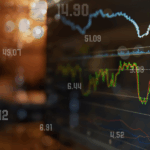TikTok is developing a new application specifically for American users, driven by the need to address national security concerns and regulatory pressures in the U.S. The standalone app will feature distinct algorithms and data systems separate from those of the TikTok global platform. This strategic move could pave the way for a sale of TikTok U.S., as the regulatory landscape continues to scrutinize ByteDance, the app’s parent company, over data privacy and security issues related to its ties with China.
The decision to create a separate app for the U.S. comes amid ongoing efforts to prevent a ban on TikTok by demonstrating compliance with U.S. laws and security protocols. These initiatives resemble previous actions by platforms like Douyin, TikTok’s sister app in China, which operates independently within its domestic market. The independent American app will likely focus on local user content, distancing itself from the global TikTok ecosystem to cater directly to U.S. users’ preferences and security measures.
How Does “M2” Affect Users?
Project “M2” aims to establish TikTok U.S. as a discrete entity by September, by creating a separate codebase that includes AI models, algorithms, and user data tailored to the American audience. This change could limit the accessibility of global content for American users while enhancing local content and recommendations. By doing so, TikTok aims to satisfy U.S. regulatory demands and safeguard its operational continuity in the country.
What Are the Implications for TikTok Creators?
The new app’s focus on American user-generated content may affect international creators who rely on the U.S. audience for revenue. The separation from the global platform could limit their reach to American users, potentially influencing their earnings. Nonetheless, TikTok intends to maintain a healthy environment for creators by incorporating American data to train its recommendation algorithms, ensuring content aligns with the preferences of U.S. users.
Despite TikTok’s statement dismissing reports about the development of a standalone U.S. app, the project’s timeline and technical specifications suggest a significant shift is underway.
TikTok asserted that the information was “based on anonymous uninformed sources” and characterized it as “factually inaccurate.”
Nevertheless, the ongoing transition reflects an ongoing dialogue between the platform and regulatory authorities to address concerns surrounding data security.
National security concerns have consistently driven U.S. policy regarding TikTok. The pressure from lawmakers to ensure that ByteDance does not share users’ data with the Chinese government has articulated a clear impetus for the development of an independent U.S. app. This approach signifies a proactive step in ensuring ongoing compliance with government directives.
As the establishment of the standalone American version progresses, it illustrates the measures technology companies must undertake to address international regulatory standards. The implications of these moves on TikTok’s business relations and its potential sale add another layer of complexity to an already intricate situation.
Efforts to create a standalone U.S. version of TikTok underscore the balancing act of complying with national laws while maintaining operational prowess. Understanding the intricate developments and implications of these actions helps consumers and creators navigate this rapidly evolving digital landscape effectively.










